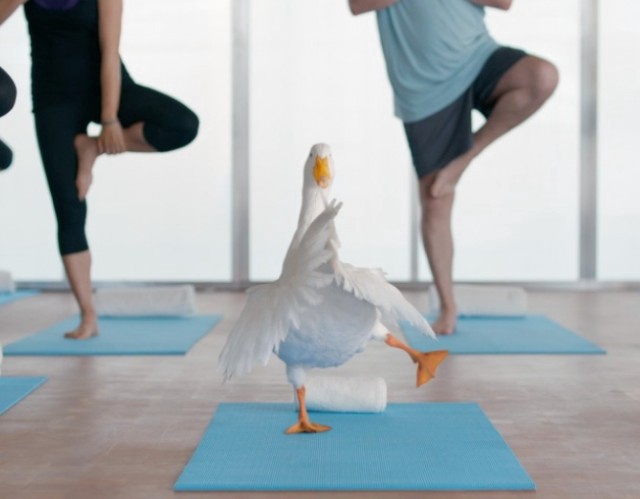I Can Stand on My Head But $$ Falls From My Pockets: The Costs of Keeping Fit
by Annie Abrams

The week before my wedding, a very effective Eastern European massage therapist ironed a knot made of stress and headstands out of my trapezius and said, “You know, all over Europe massage is medical, not leisure like in America. You should come back twice a month.” I scoffed inwardly. As if I could afford such a luxury on the regular. Like many grad students, my financial situation is not so dire that I never eat lunch out for no real reason, but it’s not like I order extra guac with abandon, either.
In my mind, a massage was like guac: an extra that has health benefits, but is mostly for pleasure.
Given this attitude, it might surprise you to learn that I spend a lot of money on exercise. So much money that you might consider my workout habit a vice. It costs pennies a workout to lace up worn-in running sneakers and throw on old gym shorts for a jog out in the fresh air, soaking up vitamin D. I reckon that most people people would be hard-pressed to categorize this thrifty self-betterment as something that ought to feel ashamed of.
But what about other kinds of exercise, ones that happen not outdoors in the bright light of day, but in a darkened private room, sequestered from the public?
Over the past year, I’ve joined in on all manner of spin and yoga classes in an effort to shake the 15 pounds I gained before I was diagnosed with hypothyroidism last spring. Depressed and listless, like a lot of victims of the disease before treatment, I leaned on encouraging instructors to motivate me to move. And then, dear reader, I got hooked.
Over the course of a few months, I spent thousands of dollars on:
+ Lululemon leggings — I’m wearing them so frequently, and the cheaper cotton ones look worn so fast, and I need at LEAST enough to go a week and a half without doing laundry, I justified;
+ class packs at a nearby spin studio (at least I’m not throwing ALL of my money away at Soul Cycle, I told myself, as I handed over a card to pay $350 for 20 classes);
+ a gym membership at Blink, where I was running on the treadmill instead of running outside, so I considered the $24 monthly a cable bill — the gym was a place to catch up on “Housewives”;
+ and yoga classes, an expenditure I will return to later.
My resting heart rate dropped, my cholesterol took a nosedive, I lost the weight, and, in case you missed the humblebrag in the first line, I can stand on my head. Classes also helped me to structure my days as I worked on my dissertation, and as I kept at it, I found myself far less anxious than I’d ever been.
These days I’m “only” spending $125 monthly on a Classpass membership, and I read a lot about how fitness is moving in the direction of boutique studios. “EVERYONE ELSE IS DOING IT,” screams ClassPass, “10 NEW STUDIOS ADDED THIS MONTH!” I wonder if the site’s other users consider their membership a vice — if they have occasional pangs of guilt for not just going for a run or doing yoga at home.
It seems straightforward to say that not spending so much on fitness would cost less than doing it. But here’s an intangible: my father was extremely overweight when he had his first attack and then his second and when he was put on dialysis. He couldn’t return to work for the twelve years between his first heart attack and his death. Hospital care is expensive. Given my genetics, is a cost that I think of as self-indulgent now worth many more potential dollars of cure? There’s no way to know.
There are other intangibles at play too. If you really believe in building small communities in this city where there are so many people, how much is the right price to pay to make sure a local yoga studio can do just that? For me, yoga has been different from all other modes of exercise. My mat ($68) affords me reflection and solace at the same time that it lowers my blood pressure. I think that quality of instruction is worth paying more for because there are so many under-trained teachers in this city, and the risk of personal injury is high. And I think that instructors and janitors and managers at studios should be making living wages so they can occasionally afford their own guac, literal or otherwise.
There’s a strange transaction that takes place at the gym or fitness studio: how much is each pound of fat lost or muscle gained worth in dollars and cents? There are numbers on both sides of the equation, but I haven’t yet seen an algorithm that translates one into the other. Exercise classes and pricy gear meet at the crux of vice and virtue, and it’s sometimes impossible to tell when I’ve tipped from one area into the other.
How do you do fitness? Does it align with how you do money generally? Inquiring minds need to know.
Annie Abrams spins and does yoga in New York.
Support The Billfold
The Billfold continues to exist thanks to support from our readers. Help us continue to do our work by making a monthly pledge on Patreon or a one-time-only contribution through PayPal.
Comments